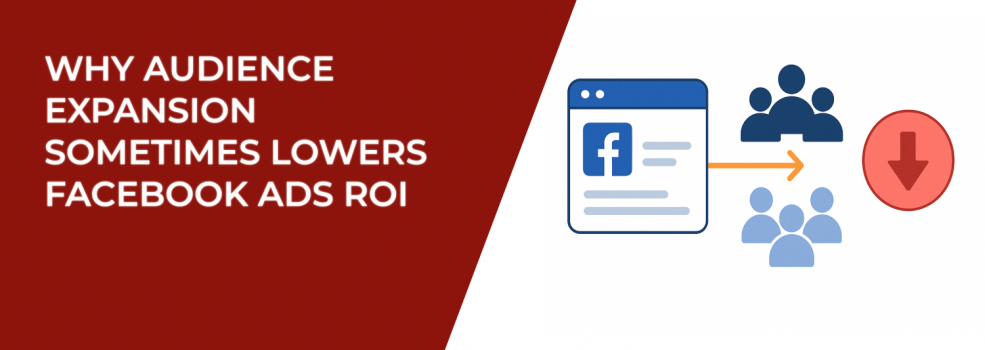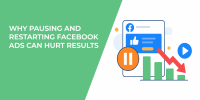When you run Facebook Ads, you’ve probably seen the option for “Advantage Detailed Targeting.” It’s also called audience expansion. At first glance, it feels like a win: Facebook will help you reach more people who might be interested. But here’s the catch — more people doesn’t always mean better results. Sometimes, it actually lowers your ROI.
Let’s break down why.
What Audience Expansion Really Does
Audience expansion tells Facebook: “Don’t just stick to the exact interests I picked. Go find people who look similar.”
So, if you target people interested in “digital marketing,” Facebook might also show your ads to people who simply read business blogs or like startup pages.
That can work if you want bigger reach. But if you need to reach very specific buyers — like B2B decision-makers or niche customers — expansion often pulls in the wrong crowd. For marketers who want to get targeting right from the start, it’s worth revisiting the basics in Facebook Ad Targeting 101.
Why ROI Goes Down
When you expand too far, the quality of your audience drops. That’s when your ROI starts to suffer. Here’s why:
-
Less relevance. Your ads reach people who don’t really care about your product.
-
More wasted views. Ads get shown to users who scroll past without a second thought.
-
Confused algorithm. Facebook has a harder time learning who actually converts.
-
Higher costs per sale. Even if impressions are cheap, your cost per lead or purchase rises.
This ties directly into a common issue advertisers face: when targeting signals aren’t clear, ad sets underperform. You can learn more about diagnosing this problem in Why You See “Ad Set May Get Zero” on Facebook and How to Fix It.
When Expansion Can Help
Audience expansion isn’t always bad. In fact, it can be useful in some situations:
-
Awareness campaigns. If your goal is just reach or video views, bigger is better.
-
Creative testing. Want quick feedback on new ad ideas? More eyeballs give you faster results.
-
Mass-appeal products. If you sell something almost anyone can use, like a fitness app or a budget gadget, a broader audience makes sense.
But if your product is niche or high-ticket, precision usually beats scale. If you’re unsure how to define your audience in the first place, check out How to Define a Target Audience for Marketing: a Step-by-Step Guide.
How to Keep ROI Safe
If you want to grow your reach without losing returns, try this:
-
Begin with small, focused audiences. Think job titles, Facebook groups, or Page followers.
-
Run a split test. One ad set with expansion, one without. Compare the numbers.
-
Track the right metric. Focus on cost per lead or purchase, not just CPM.
-
Use exclusions. Remove groups you already know won’t convert.
-
Build lookalikes. Start from your customer lists or engaged visitors instead of leaving all the work to expansion.
These steps give you more control over who actually sees your ads.
Final Thoughts
Audience expansion sounds appealing — who doesn’t want more reach? But in many cases, it lowers ROI by sending your ads to people who aren’t ready to buy. The best strategy is to test carefully, watch your numbers, and only expand when your core audience is already strong.
Next time you see the “expand audience” box, ask yourself: will this bring in better customers, or just more expensive clicks?

